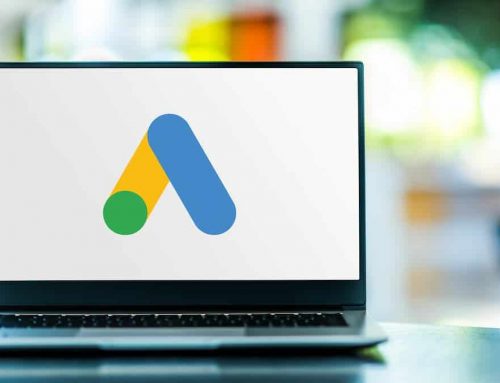Whether you’re new to digital marketing or have been running a business for a while, you’ve probably heard about Google Ads at this point. However, it’s not always possible to get the desired results from Google Ads, especially if you don’t know how to use it.
Unfortunately, most business owners and online operators who use Google’s PPC advertising platform are completely clueless about what they’re doing. They have no idea how the whole thing works or how to even do a campaign audit. That’s why it’s difficult to see any lasting improvement in clicks, impressions, leads or sales. There are just no measurable results to show for all their hard work.
But not all is lost. You can still save the situation and leverage the power of Google Ads to get yourself new customers. The most important thing is to ensure that the message you’re putting out there actually resonates with your targeted audience.
That’s exactly what we’re going to help you with in this article, using five simple tips.
- Use Negative Keyword List

What are negative keywords? Negative keywords are designed to follow and work with exact-match keywords.
Let’s say that as part of advertising your swimming pool maintenance business you change from a broad-match keyword to an exact-match keyword instead. But this doesn’t help with the number of clicks and conversions you’re getting. If that’s the case then you can always turn to negative keyword lists which are basically designed to work at the ad group and campaign level to block ads from showing on irrelevant queries.
So, you can add all of the irrelevant keywords to this negative keyword list in order to reach the people who’re relevant to your business.
- Don’t Use Broad-Match Keywords
More isn’t necessarily the best strategy for everyone. That’s why broad-match keywords aren’t always effective because they place you in front of a wide array of people, whereas exact-match keywords offer more focused and effective targeting.
To help you understand how broad-match keywords work, we will explain them. Let’s say you own a swimming pool servicing company and decide to use the broad-match keyword “swimming pool maintenance.”
The problem with this keyword is that it’ll cause your website to appear in all search results that are relevant to it. This is obviously a waste of money because you’ll be attracting all sorts of people, even those who might not be interested in your company.
The best way to go is with exact-match keywords because they allow you to include the exact keyword term that you entered, as is. Of course, you may not get as many clicks and impressions as you’d get with broad-match keywords, but you’ll reach relevant audiences that come with better click-through rates. This can significantly boost your conversion rate while lowering your overall ad costs.
- Create Search and Display Campaigns
Whenever you create a new Google Ad campaign, you must choose between running your ads on Google Display or Google Search networks. Or you can opt for both by going through the Google Display Select option.
The worst thing you can do is run your ad using both networks. That’s because the Display Network is massive on its own and it offers cheaper clicks when compared to the Search Network. Now, while it’s okay and even effective to use both networks, you should always do so separately. The Search Network allows you to target specific people that are actually looking for a business like yours.
The Display Network allows you to use interruption marketing where your ads popup on people’s screens when they’re surfing the net. For the most part, you need to create a different ad for every network.
However, the risk of operating an ad campaign on both networks is that you’re unable to optimise your ads to reach a wider audience. The key is to develop targeted ad campaigns that are different for both Display and Search.
- Test All Ads

The process of creating a Google Ad campaign comes with the requirement to create an actual ad. The downside is that most marketers get stuck at this stage and end up making a single ad for all of their campaigns. This obviously won’t work as well as creating different ads for different channels. You might get a few clicks and impressions here and there but there’s no way to determine how well your ads are performing.
The best way to figure out if an ad is working or to optimise the results of each ad is to run a head-to-head competition between different ads. All you have to do is tweak the copy or graphics in one of your ads so that it’s easy to distinguish it from the first ad.
Once you’ve done a thorough comparison between the two ads over the course of a few days or weeks you’ll be able to clearly see which one is more appealing and effective. Then, you can optimise costs by pausing the weaker ad, develop a new competitive ad and start the head-to-head content from scratch once again.
Of course, a split test will sometimes come out with a tie and if that happens then you should pause one of the ads and create another ad to compete with the original one. Through this process, you’ll eventually find the right combination of ad copy and graphics that work.
- Build a New Campaign for Your Winning Keywords and Ads
Do you find that only one of your keywords or ads are working on the Display or Search networks? if that’s the case then you should create a new campaign that contains only the effective keywords and visuals.
This allows you to create a cost-effective keyword and ad combo. It also enables you to come up with top performing keywords that’ll help you get the results you want.
The better your keywords, the closer you’ll be to an effective campaign. Only then should you increase your budget to reflect your results.
Conclusion
Google Ads is one of the most effective digital marketing tools available to entrepreneurs and marketers today. But you must be patient and incredibly disciplined in order to reap rewards. If you follow our tips above, you will surely succeed.
If you find yourself feeling overwhelmed with managing your Google Ads campaign, you can speak to us on 03 9043 4444 so we can discuss about your marketing goals.






